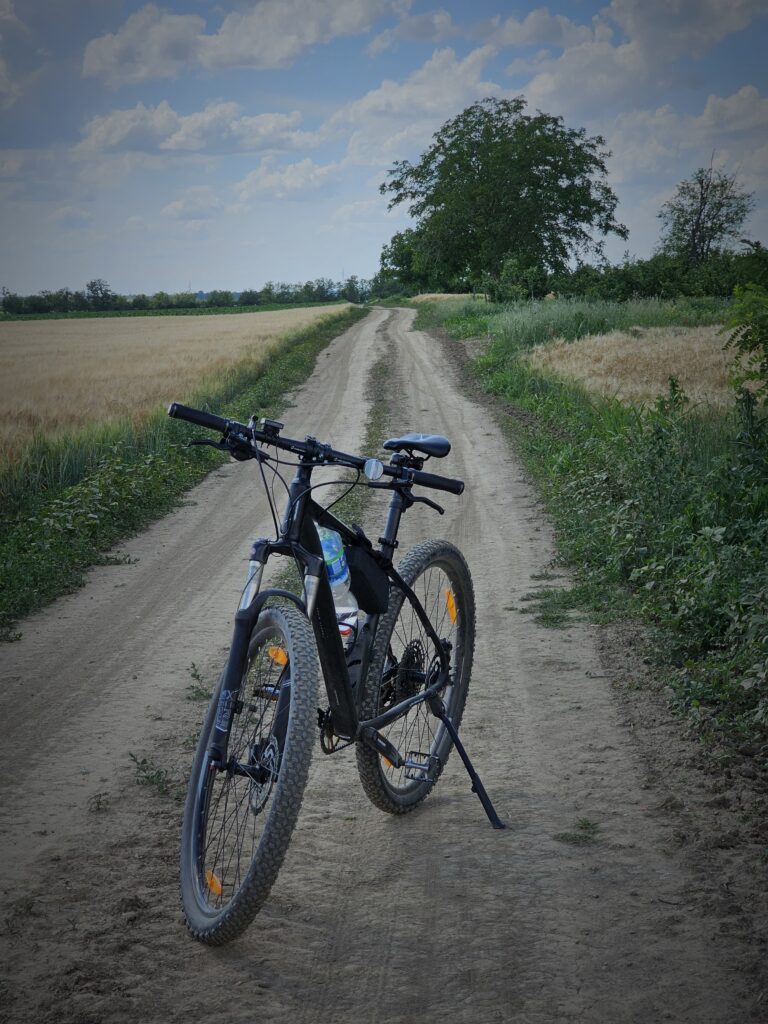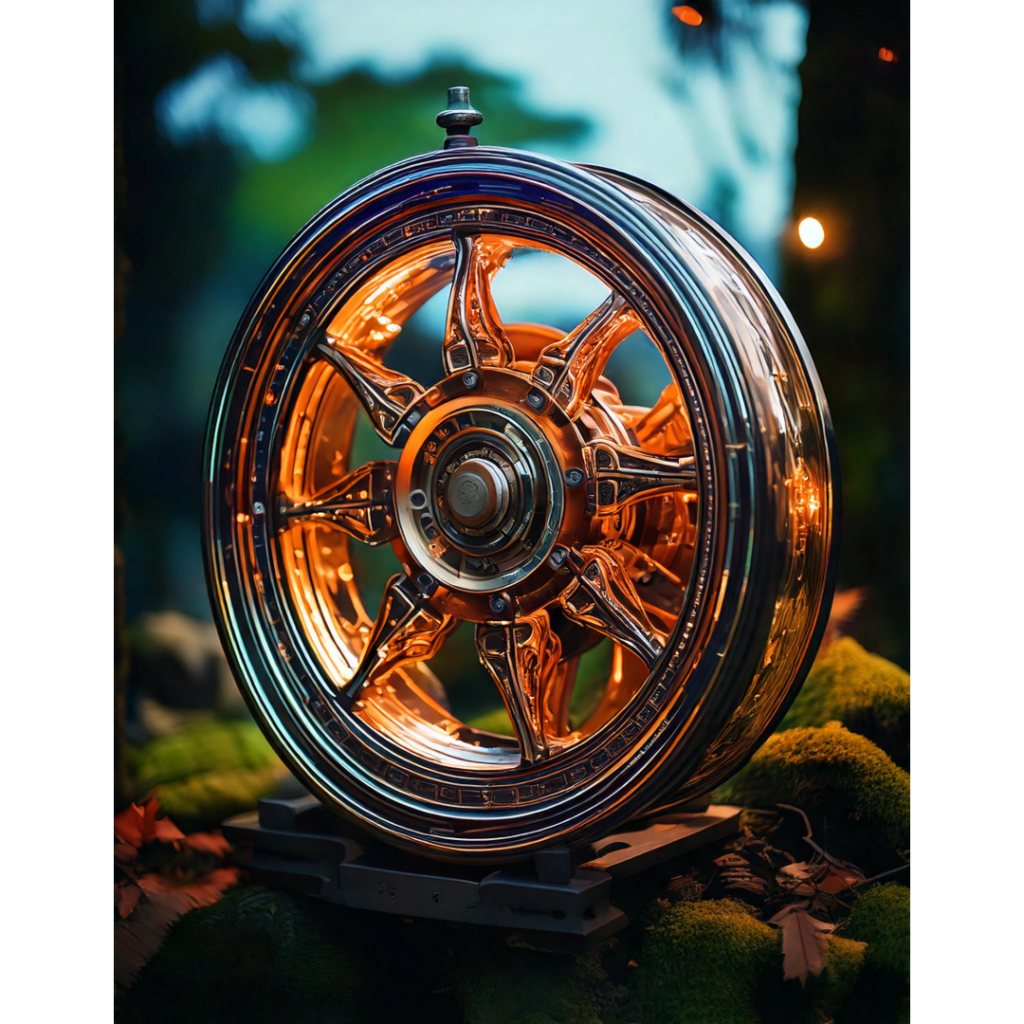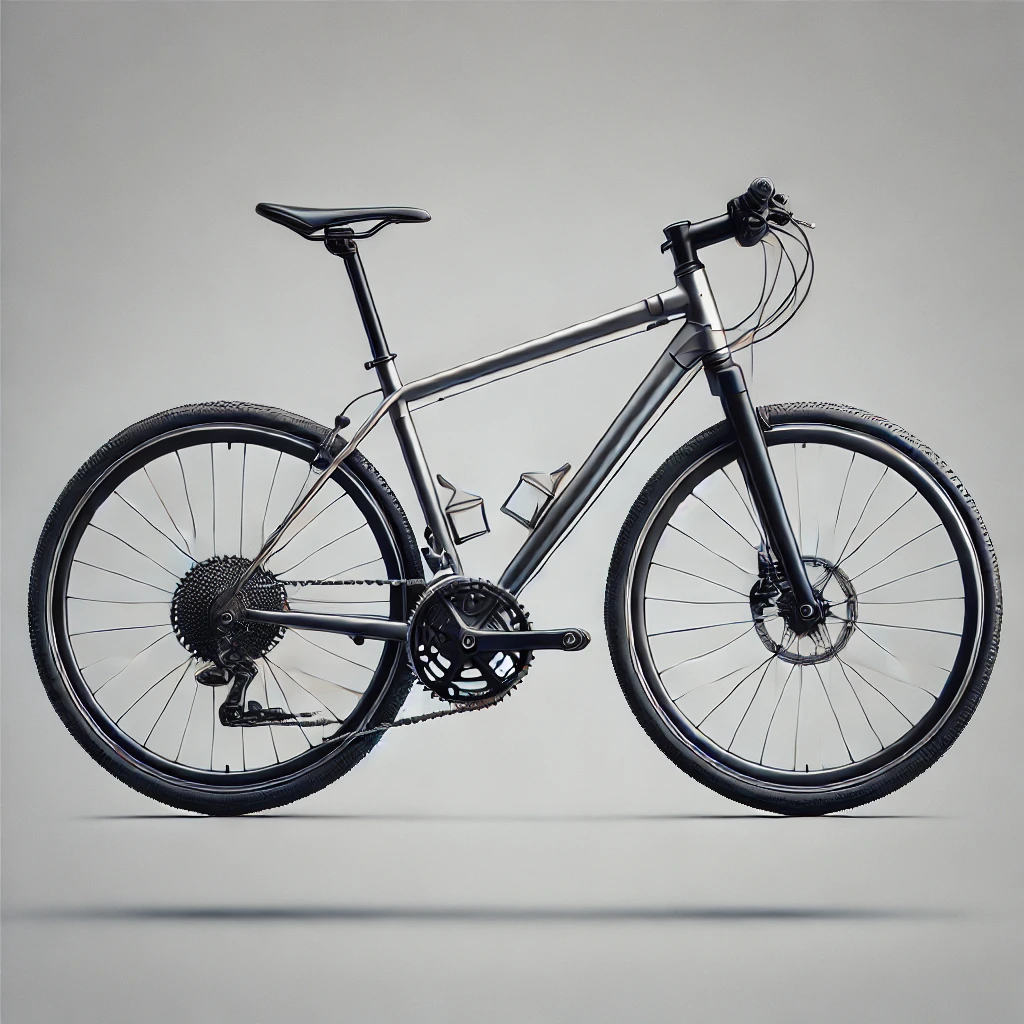The Physics of Bicycles: Why Are They So Stable?
Bicycles are one of the most efficient modes of transportation ever invented. They are lightweight, require minimal energy to operate, and can remain stable even at high speeds. But have you ever wondered why bicycles stay upright so effortlessly? The answer lies in a complex interplay of physics, involving concepts such as angular momentum, gyroscopic effects, center of mass, and trail geometry.
In this post, we will explore the fascinating physics behind bicycle stability, debunk some common myths, and explain why a bicycle is inherently more stable when moving than when stationary.

Source: Blog author (Photo taken with a DSLR camera)
1. The Myth: Is the Gyroscopic Effect the Main Reason for Bicycle Stability?
One of the most common misconceptions about bicycle stability is that it is primarily due to the gyroscopic effect – the resistance of a spinning wheel to changes in its orientation.
What is the gyroscopic effect?
- When a wheel is spinning, it resists changes in its axis of rotation due to angular momentum.
- This effect is commonly seen in spinning tops, which maintain their balance as long as they keep spinning.
At first glance, this seems like a logical explanation for bicycle stability. However, scientific experiments have shown that gyroscopic forces alone are not sufficient to explain why a bicycle remains upright.
Why is the gyroscopic effect insufficient?
- If you attach a counter-rotating wheel to a bicycle to cancel out the gyroscopic effect, the bicycle can still remain stable.
- Many bicycles with small or lightweight wheels (such as racing bikes) have very little gyroscopic effect, yet they are still stable.
So, while the gyroscopic effect contributes to stability, it is not the primary reason bicycles remain upright.

Source: AI generated
2. The Real Reason: The Trail Effect and Steering Dynamics
Instead of relying on gyroscopic forces, a bicycle remains stable mainly due to its steering dynamics and geometry, particularly a phenomenon known as the trail effect.
What is the Trail Effect?
The trail effect is determined by the position of the front wheel’s contact point relative to the steering axis.
- When the front wheel is turned, it naturally “trails” behind the point where the fork axis meets the ground.
- This causes the wheel to self-correct and return to a straight position, contributing to bicycle stability.
Mathematically, the trail distance is given by:
\[
\text{Trail} = \frac{r_w \cos(\theta) – d}{\tan(\alpha)}
\]
\begin{align*}
r_w & \text{ is the wheel radius} \\
\theta & \text{ is the steering axis angle} \\
d & \text{ is the fork offset} \\
\alpha & \text{ is the head tube angle}
\end{align*}
Bicycles with a well-designed trail provide self-stabilization, making it easier to ride in a straight line.
3. The Role of Center of Mass and Forward Motion
Another crucial factor that contributes to bicycle stability is the position of the center of mass relative to the wheels.
- When a bicycle moves forward, the rider’s weight is distributed across the wheels, and the system behaves like an inverted pendulum.
- If the bicycle starts tipping to one side, small steering adjustments can shift the contact points of the wheels, keeping it balanced.
Why Do Moving Bicycles Stay Upright More Easily?
- At higher speeds, small deviations in balance cause only minor steering corrections, making the bicycle easier to control.
- At lower speeds, the rider must make larger steering inputs to maintain stability, which is why balancing a slow-moving bike is harder than riding at higher speeds.
This is why you can effortlessly coast on a bicycle at high speed but struggle to maintain balance when moving slowly.
4. The Role of Rider Input: Active vs. Passive Stability
Bicycles exhibit two types of stability:
- Passive Stability: The natural tendency of the bicycle to remain upright due to its geometry and forward motion.
- Active Stability: The corrections made by the rider to maintain balance.
How Do Riders Maintain Stability?
Riders unconsciously make tiny steering adjustments to counteract deviations from balance. These adjustments occur before the rider is even aware of them.
- When a bicycle starts tipping to one side, the rider instinctively steers into the fall to correct the imbalance.
- This principle is similar to how tightrope walkers use a balancing pole to counteract small deviations.
Even without a rider, some well-designed bicycles can still self-correct and maintain balance if given enough forward speed.
5. Why Do Some Bicycles Feel More Stable Than Others?
Different types of bicycles have different geometry and design features that affect their stability.
Factors That Influence Bicycle Stability
- Wheelbase Length
- Longer wheelbases (such as those found on touring bikes) provide greater stability by distributing weight over a larger area.
- Shorter wheelbases (such as on racing bikes) allow for quicker maneuverability but require more precise control.
- Head Tube Angle and Fork Offset
- A steeper head tube angle (closer to vertical) makes a bicycle more responsive but less stable.
- A shallower head tube angle increases stability but may reduce agility.
- Tire Width and Pressure
- Wider tires provide more surface contact and can contribute to a more stable ride.
- Higher tire pressure makes steering more sensitive, requiring more active control.
- Frame Material and Flexibility
- Rigid frames (like those made from carbon fiber) provide sharp handling but may transmit more vibrations.
- Flexible frames absorb road imperfections, making long rides more comfortable but slightly affecting handling.
Different bicycle designs optimize stability for different uses, from fast-paced racing to long-distance touring.
6. Why Is It Harder to Balance a Stationary Bicycle?
If you’ve ever tried to balance on a bicycle without moving, you know how difficult it is. But why?
- When a bicycle is stationary, it lacks forward momentum, making it difficult to steer and correct balance.
- Without the gyroscopic effect and trail effect working together, the bicycle becomes unstable.
- Riders often compensate by using their feet or shifting their weight.
This is why track cyclists use a technique called “track stand” to balance by making tiny back-and-forth adjustments.
7. The Science Behind Bicycle Turns and Countersteering
What Is Countersteering?
At speeds above a walking pace, turning a bicycle requires an unusual technique called countersteering.
How It Works:
- To turn left, the rider first steers slightly right for a fraction of a second.
- This causes the bicycle to lean left, allowing the rider to execute a smooth turn.
This counterintuitive maneuver is necessary due to the physics of two-wheeled motion.
Why Is Countersteering Essential?
- It shifts the bicycle’s center of mass to maintain balance during a turn.
- It allows for tighter, more controlled curves at high speeds.
- Motorcyclists also use countersteering to navigate turns effectively.
8. The Future of Bicycle Stability: Self-Balancing Bikes
Advances in technology are enabling bicycles to become self-balancing, using sensors and gyroscopic stabilizers.
Some research labs have already developed bicycles that can balance and steer themselves, even at low speeds. These could revolutionize urban mobility by making cycling safer and more accessible to beginners.
9. Conclusion: Why Bicycles Are So Stable
Bicycle stability is the result of multiple interacting factors:
- The trail effect helps steer the bicycle back to a straight line.
- Forward motion and center of mass make balance corrections easier.
- The gyroscopic effect provides additional but not essential stability.
- Rider input and countersteering actively maintain balance.
This elegant combination of physics is what makes riding a bicycle feel so natural, even though the underlying mechanics are incredibly complex.
So next time you hop on a bike, remember – you’re not just pedaling; you’re mastering a finely tuned balance of forces, momentum, and physics!







